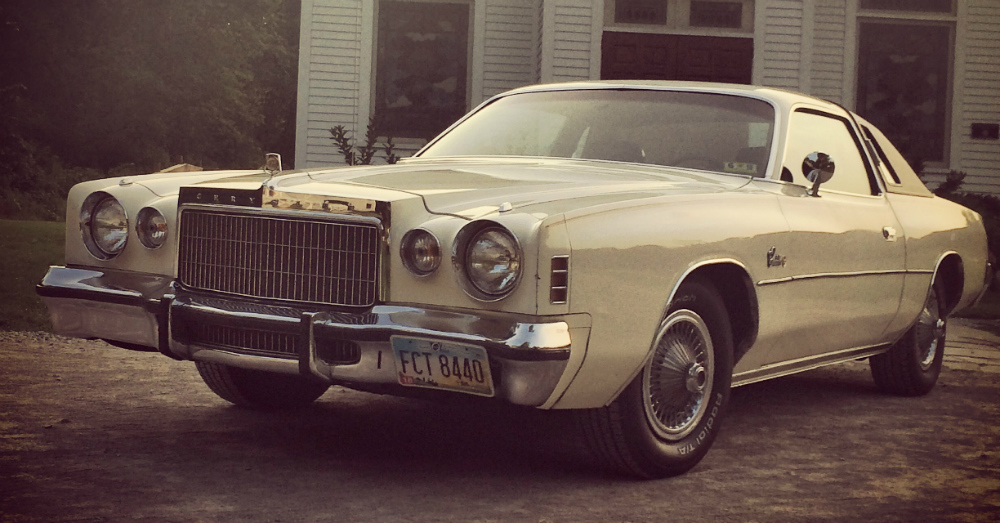When you think of the auto industry scrambling around typically the time periods you think of right away are either the 1970s or 1980s. The gasoline embargo and emissions regulations that were put in place made it difficult for automakers to continue to offer powerful machines and still conform to guidelines along with the need to find a way around the gasoline problem. Add in the safety standards that had to be met, the need to convert from leaded to unleaded fuel and a lack of funds to produce new models the way manufacturers do today.
All of this together brought us some extremely odd cars; here are seven that were some of the strangest.
1977-1978 Ford Pinto Cruising Wagon – While many during this decade were customizing vans to be the travelling vehicle of the time the problem with the vans was the fact they guzzled gasoline. The answer seemed to be to put a wagon on the market that had some van features such as the panels and the tiny porthole window to allow for similar customization. This two-door wagon was odd but offered some space with a much better overall fuel mileage than the vans of the era that were being customized.
1974-1976 Bricklin SV-1 – If you wanted to see a cautionary tale that John DeLorean should have paid attention to it would be this one. Malcolm Bricklin was responsible for bringing Subaru to the US but wanted to build a sports car under his name. He used parts off AMC models and built the cars in New Brunswick, Canada. The problem was a lack of function with these cars. The cars had gullwing doors that weren’t reliable, quality issues with features and simply could not be produced in the numbers needed to make them profitable. The commemorative coin and stamp that was created years later in Canada was more successful than the car itself.
1970-1972 Honda Z600 Coupe – This was the first car Honda brought to the US and it was sold in motorcycle dealers. This tiny car was powered by a 600cc twin engine that made only 36 horsepower. It had three versions, but the Z600 was the one that made us wonder what the company was thinking with a tiny build and an ugly rear window to go with the oddly placed rearview mirrors. This may have been a failure, but thankfully the next offering, the Civic was a huge success.
1974-1978 Datsun F-10 – Until this car hit the market everything Datsun had brought to the US was a homerun. The manufacturer had sports cars that we loved and some exciting sedan but this car was awful. On paper it was fine with a FWD mode and being powered by a 1400cc engine that could be attached to either a manual or semi-automatic transmission with four-wheel independent suspension, but the look was ridiculous. At the time this style looked like it should be part of a science fiction prop group rather than a car. Thankfully Datsun made a bounce back after this abysmal failure.
1975-1979 Chrysler Cordoba – At the time many automakers were still building large cars that would not provide good fuel mileage, but they still needed to build and sell on these platforms. This included the B-Body with was the build for this car. The idea was to load it up with lots of features and target a more affluent customer base. This became a difficult sell as a coupe model on this large car that appeared to take all its styling cues from the Spanish bull-fighting industry and was promoted by the famed Fantasy Island actor Ricardo Montalban.
1978 Ford Mustang II King Cobra – This car really took the cake when it came to ridiculous oddities in the 1970s. It wasn’t the worst looking car, but when you take a Pinto and call it a Mustang, toss in a mild mannered 133 horsepower engine, even though it was a 302 V8 and then sticker it up and call it a King Cobra you have done something extremely wrong. Ford needs to be thankful this car was never taken seriously and very few sold otherwise the Mustang might have died off altogether after this debacle.
1975-1980 AMC Pacer – The Pacer wasn’t a bad car but it sure was a strange one. This was the result of some research which found that we wanted wider cars even though we like the compact cars from Japan. The result was a car that is wider but still small to fill both desires. Unfortunately AMC had to use its six-cylinder engine when two Wankel engine suppliers dropped out of the project. The style was too much and the car never took off. That along with the lack of market power for AMC ended up being a huge part of the demise of this company.
You might look at these cars and think fondly of some of them, especially if you drove one yourself back in the 1970s. Unfortunately that was a decade mired with cars that were if this ilk that would not give you pride in ownership from any perspective. Although these cars ended up as failures, there are times when a failure is needed in order to progress forward and all but AMC survived the struggles to have highly profitable futures in the automotive industry after showing us these cars that should have never left the drawing board.
This post may contain affiliate links. Meaning a commission is given should you decide to make a purchase through these links, at no cost to you. All products shown are researched and tested to give an accurate review for you.
